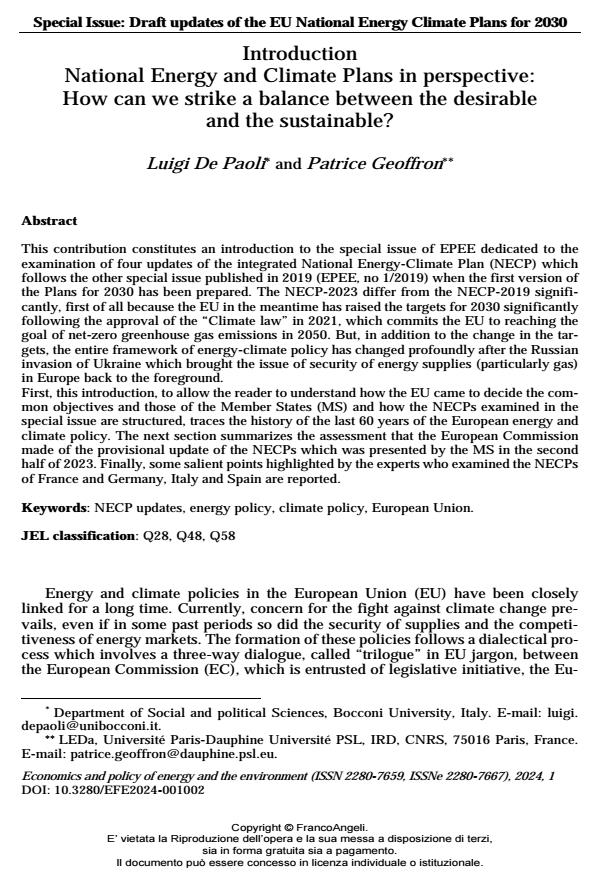Introduction National Energy and Climate Plans in perspective: How can we strike a balance between the desirable and the sustainable?
Titolo Rivista ECONOMICS AND POLICY OF ENERGY AND THE ENVIRONMENT
Autori/Curatori Luigi De Paoli, Patrice Geoffron
Anno di pubblicazione 2024 Fascicolo 2024/1
Lingua Inglese Numero pagine 18 P. 15-32 Dimensione file 177 KB
DOI 10.3280/EFE2024-001002
Il DOI è il codice a barre della proprietà intellettuale: per saperne di più
clicca qui
Qui sotto puoi vedere in anteprima la prima pagina di questo articolo.
Se questo articolo ti interessa, lo puoi acquistare (e scaricare in formato pdf) seguendo le facili indicazioni per acquistare il download credit. Acquista Download Credits per scaricare questo Articolo in formato PDF

FrancoAngeli è membro della Publishers International Linking Association, Inc (PILA)associazione indipendente e non profit per facilitare (attraverso i servizi tecnologici implementati da CrossRef.org) l’accesso degli studiosi ai contenuti digitali nelle pubblicazioni professionali e scientifiche
This contribution constitutes an introduction to the special issue of EPEE dedicated to the examination of four updates of the integrated National Energy-Climate Plan (NECP) which follows the other special issue published in 2019 (EPEE, no 1/2019) when the first version of the Plans for 2030 has been prepared. The NECP-2023 differ from the NECP-2019 signifi- cantly, first of all because the EU in the meantime has raised the targets for 2030 significantly following the approval of the “Climate law” in 2021, which commits the EU to reaching the goal of net-zero greenhouse gas emissions in 2050. But, in addition to the change in the tar- gets, the entire framework of energy-climate policy has changed profoundly after the Russian invasion of Ukraine which brought the issue of security of energy supplies (particularly gas) in Europe back to the foreground. First, this introduction, to allow the reader to understand how the EU came to decide the com- mon objectives and those of the Member States (MS) and how the NECPs examined in the special issue are structured, traces the history of the last 60 years of the European energy and climate policy. The next section summarizes the assessment that the European Commission made of the provisional update of the NECPs which was presented by the MS in the second half of 2023. Finally, some salient points highlighted by the experts who examined the NECPs of France and Germany, Italy and Spain are reported.
Parole chiave:NECP updates, energy policy, climate policy, European Union
Jel codes:Q28, Q48, Q58
Luigi De Paoli, Patrice Geoffron, Introduction National Energy and Climate Plans in perspective: How can we strike a balance between the desirable and the sustainable? in "ECONOMICS AND POLICY OF ENERGY AND THE ENVIRONMENT" 1/2024, pp 15-32, DOI: 10.3280/EFE2024-001002